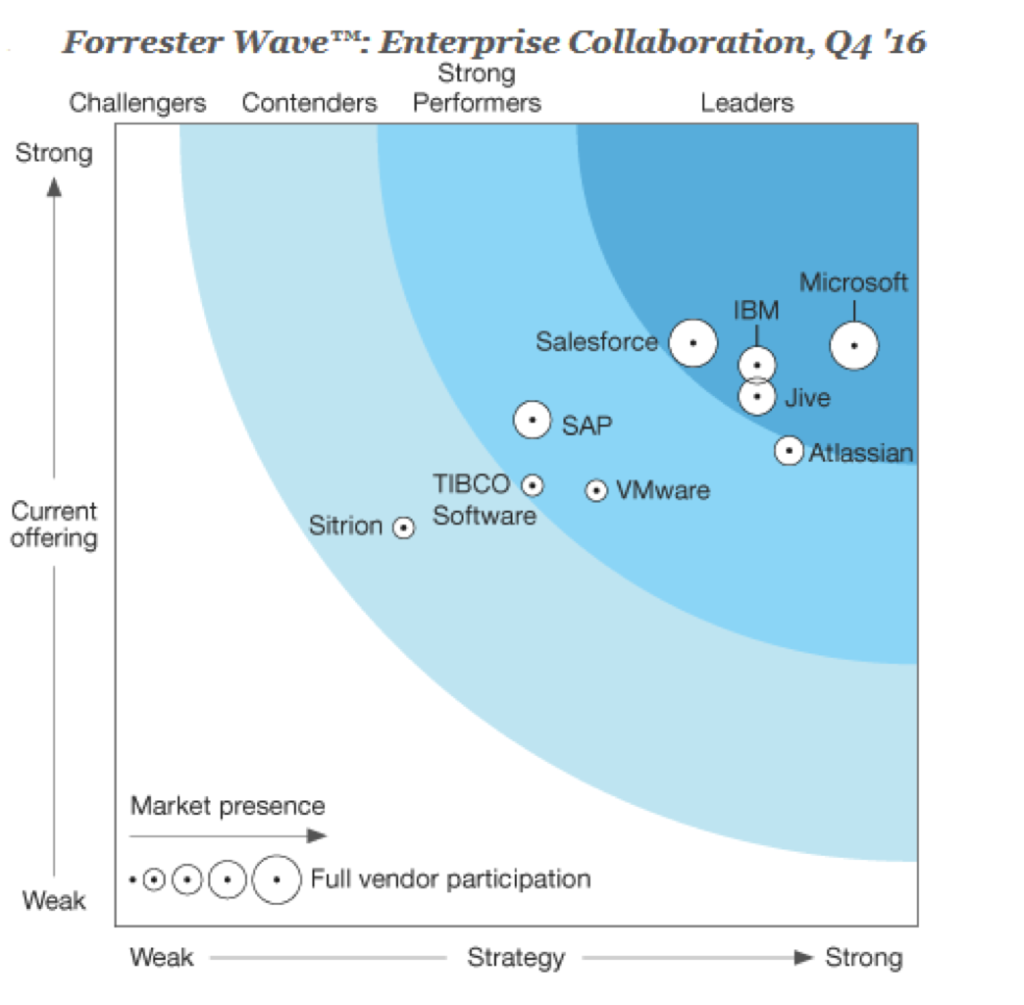The global enterprise software spend runs in the order of trillions of dollars, and enterprise collaboration platforms are quickly gaining traction with a large number of technology companies vying for market share.
Office collaboration tools have always been around, but the age of social media changed the way we interact with our friends and family, so why shouldn’t it change the way we interact at work?
The utility of such applications is now being expanded into the office space as we start exploiting technology to increase collaboration within employees and teams, offer better customer services and extract more value out of business applications.
Technology and market research firm Forrester recently released its Enterprise Collaboration report, in which the company analyzed the top players in the market, their products and how they stack up against each other.
Why is this market important?
Large enterprises around the world have hundreds of teams, and office inter-communication is one critical area that has a huge impact on the overall performance of the company. Some companies have a decentralized model while some don’t, but collaborative platforms aim to cut across these barriers by exploiting technology.
The growth of cloud delivered applications has accelerated this process, as applications can be delivered over the internet on any device, at any place and to any user.
Businesses will always be ready to invest money in anything that holds a promise to improve their performance and, that’s why they will be eager to adopt these platforms as they have a direct impact on intra-office and inter-office communications, and also change the way they interact with customers.

Forrester picked Microsoft as the strongest leader in the segment, followed by IBM, Salesforce and Jive.
The breadth of Microsoft’s products in the collaboration segment seems to have tilted things in favor of the company. As Microsoft accelerated its focus on SaaS products, it has been steadily adding layer after layer to its Office Productivity applications. So much so that this segment is a standalone financial reporting segment for the company called Productivity and Business Processes.
Microsoft does not have a single collaborative tool or application. It’s actually not even a platform because there are so many different applications that offer collaboration in some form. Here is a small sample list:
- Groups in Office 365 let you choose a set of people that you wish to collaborate with and easily set up a collection of resources for those people to share.
- If you prefer the shared inbox mode of collaboration, then the groups experience in Outlook is for you.
- Microsoft Teams is the inner loop for your team – a persistent chat board where you can have informal, real-time, conversations around very focused topics or specific sub-groups within the group.
- Yammer brings the enterprise social experience to your collaboration. It helps you make new connections and discoveries across your organization. It can help you communicate and discuss ideas company-wide or around common interest areas
You can get more details on Microsoft Groups here
And then there are public and private groups. Microsoft also recently launched Microsoft Staffhub, which allows companies to manage deskless workers, create and manage shift schedules and also allows staff to directly interact with the team.
Microsoft understands clearly that there is no one-stop solution for office collaboration. There will never be. The needs of different companies are indeed different. They can never be the same. There may be similarities with respect to an industry; for example, banks may have similar working models, while retailers will have specific needs. But even within segments the needs will hugely vary from one place to another. By taking a multi-product-multiple-tools approach, Microsoft possibly has way too many moving parts. But, as they all put the needs of the customer first, they possibly have better chance at succeeding in different office environments than any other combination of productivity tools.
The Forrester Research Report can be accessed here.
Thanks for reading our work! Please bookmark 1redDrop.com to keep tabs on the hottest, most happening tech and business news from around the world. On Apple News, please favorite the 1redDrop channel to get us in your news feed.



